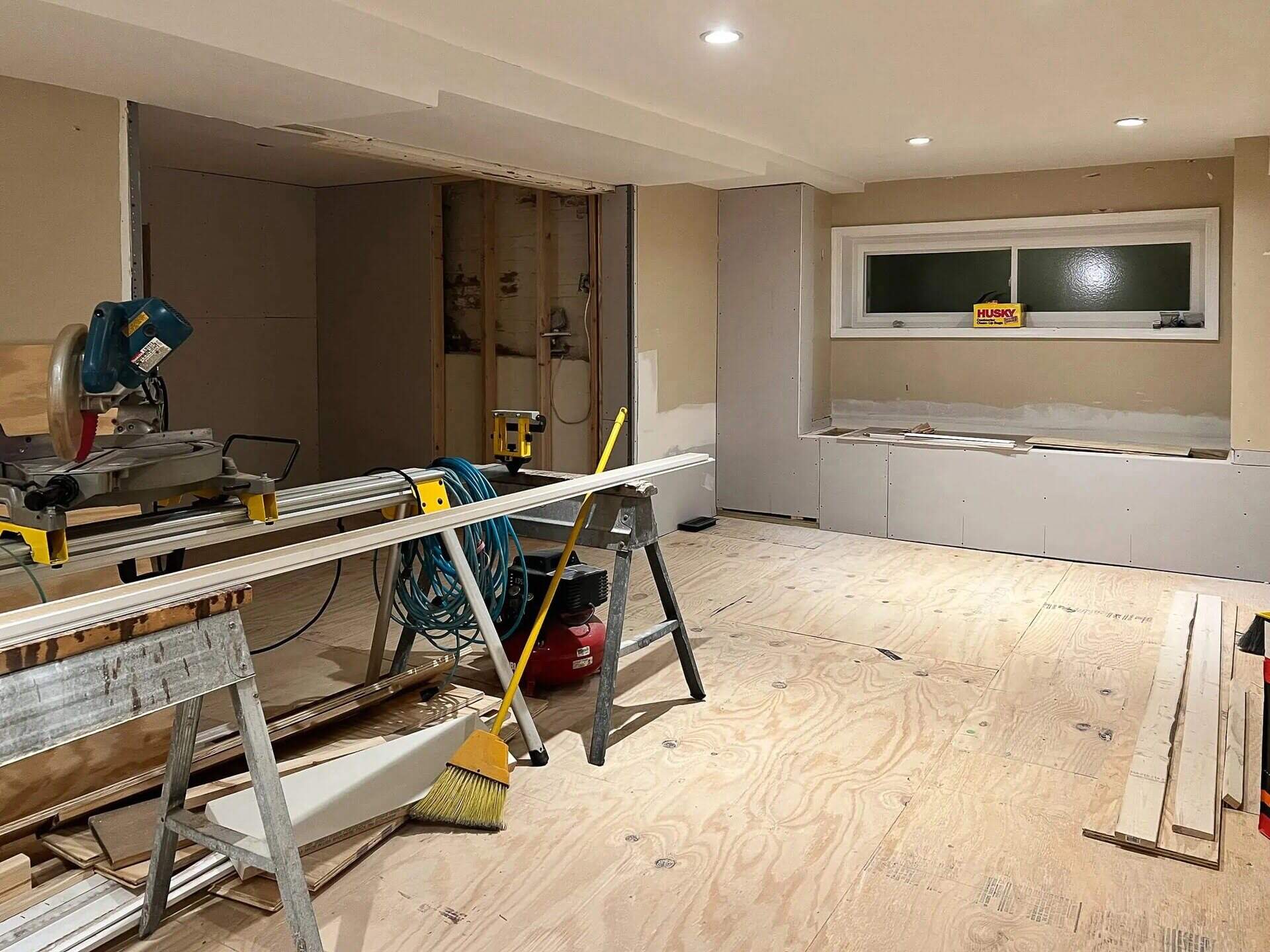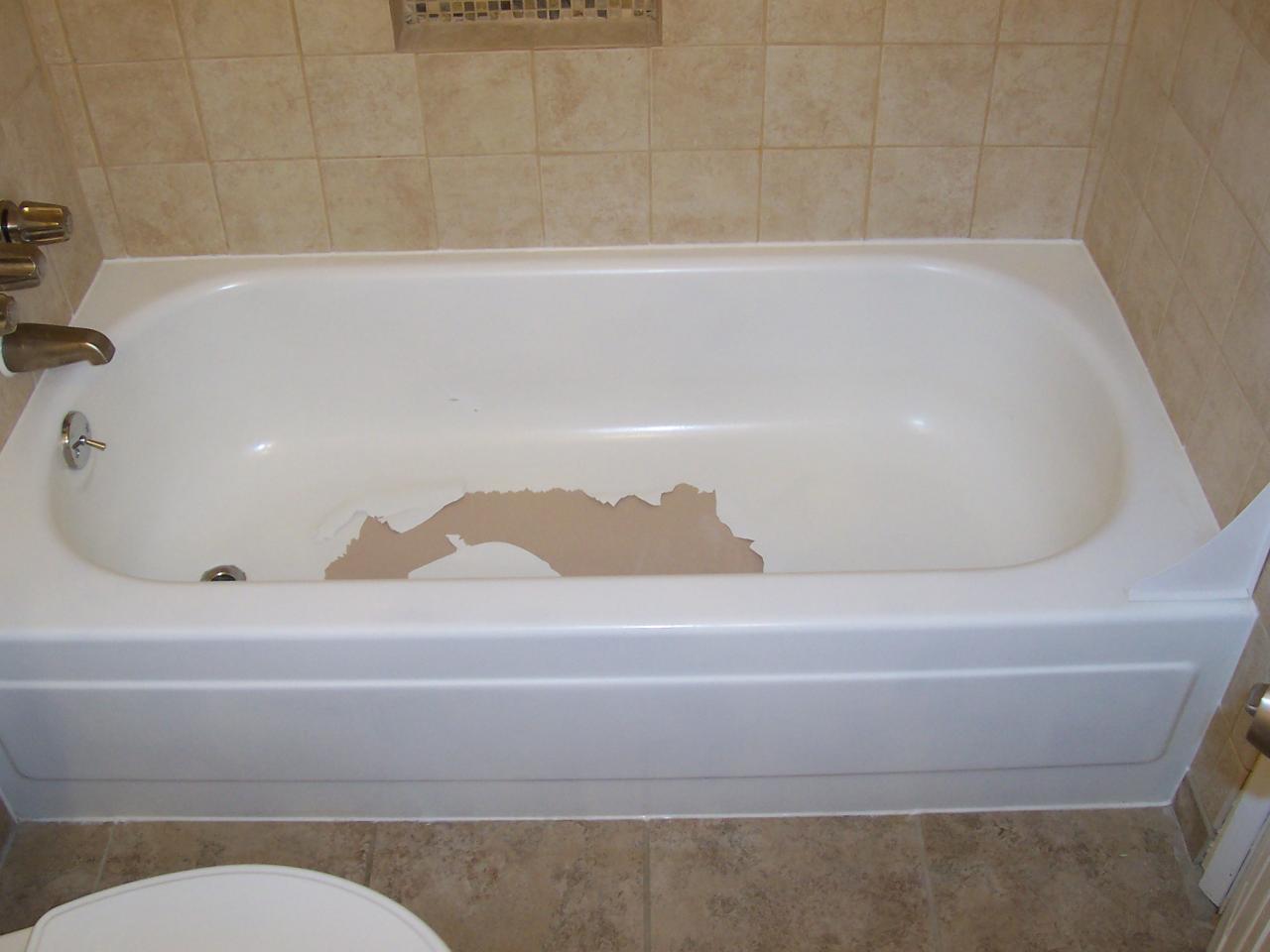Home>diy>Home Improvement>How Long Does Basement Renovation Take


Home Improvement
How Long Does Basement Renovation Take
Modified: March 21, 2024
Transform your basement with a captivating home improvement project. Discover how long it takes to complete a basement renovation and create your dream space.
(Many of the links in this article redirect to a specific reviewed product. Your purchase of these products through affiliate links helps to generate commission for Storables.com, at no extra cost. Learn more)
Introduction
Basement renovation is an exciting home improvement project that allows you to transform your underutilized space into a functional and inviting area. Whether you’re planning to create a cozy family room, a home office, or a guest suite, renovating your basement can add value and livability to your home.
One important factor to consider when embarking on a basement renovation project is the duration it will take to complete. Understanding the timeline is crucial for effective project planning, budgeting, and managing your expectations.
In this article, we will delve into the various factors that can affect the duration of a basement renovation, as well as provide some practical tips to help you prepare for the project. So, let’s dive in and explore the timeline of a basement renovation journey!
Key Takeaways:
- Factors such as the size of the project, structural changes, permits, and plumbing/electrical work can impact the duration of a basement renovation. Proper planning and collaboration with professionals are essential for a successful outcome.
- Preparing for a basement renovation involves defining goals, setting a realistic budget, hiring a professional contractor, addressing water/moisture issues, and organizing the space. Clear communication and thorough preparation are key to a smooth and efficient renovation process.
Read more: How Long Does Home Renovation Take
Factors Affecting Basement Renovation Duration
Several factors can impact the duration of a basement renovation. These factors may vary depending on the complexity of your project, the size of your basement, and the specific changes you plan to make. Here are some key factors to consider:
- Size and Scope of the Project: The size of your basement and the scope of your renovation play a significant role in determining the duration. A small basement with minimal changes may take less time, while a larger basement with extensive structural changes or multiple rooms may require more time.
- Structural Changes: If you are planning to make structural changes, such as removing walls, adding support beams, or creating new openings, this can extend the duration of the project. These changes often require careful planning and coordination with professionals.
- Permits and Approvals: Depending on your local building codes, you may need to obtain permits and approvals before starting the renovation. The time it takes to obtain these permits can vary, so it’s important to research and plan accordingly.
- Plumbing and Electrical Work: If your basement renovation involves installing or repositioning plumbing and electrical systems, this can add time to the project. These tasks require skilled professionals and may require inspections to ensure compliance with safety regulations.
- Mold or Water Damage: If your basement has any existing mold or water damage issues, these will need to be addressed before starting the renovation. Mold remediation and water damage repairs can take additional time, especially if the extent of the damage is significant.
- Customization and Finishing Details: The level of customization and finishing details you desire will impact the duration. If you opt for intricate designs, custom cabinetry, or unique finishes, this may require more time for sourcing materials and specialized labor.
It’s important to discuss these factors with your contractor or renovation team during the planning phase. They can provide insights into the specific timeline for your project based on their experience and expertise.
Now that we’ve explored the factors that can affect the duration of a basement renovation, let’s move on to how you can prepare for the project to ensure a smooth and efficient process.
Preparing for Basement Renovation
Proper preparation is essential for a successful basement renovation. Taking the time to plan and organize before the project begins will help ensure a smoother and more efficient process. Here are some steps to consider when preparing for your basement renovation:
- Define Your Goals: Start by clearly defining your goals for the basement renovation. Determine how you want to use the space and what features are important to you. This will help guide the design and decision-making process.
- Set a Realistic Budget: Determine your budget for the renovation and set realistic expectations. Consider factors such as material costs, labor fees, permits, and unexpected expenses. It’s advisable to set aside a contingency fund for unforeseen circumstances.
- Research and Gather Inspiration: Browse home improvement magazines, websites, and social media platforms for inspiration and ideas. Create a mood board or folder to save images of designs and features that resonate with your vision for the space.
- Hire a Professional Contractor: Look for a reputable and experienced contractor who specializes in basement renovations. Request references, read reviews, and ask for a detailed estimate and timeline for the project.
- Check for Water and Moisture Issues: Before starting any renovation work, address any existing water or moisture issues in your basement. Ensure there are no leaks, dampness, or signs of mold. Fixing these issues before the renovation begins will prevent future problems.
- Clear and Organize the Space: Remove any items, furniture, and clutter from the basement. This will provide a clean and empty canvas for the renovation work. Consider renting a storage unit if needed.
- Communicate Your Vision: Clearly communicate your goals, preferences, and vision to your contractor. Provide them with any design ideas, sketches, or inspiration images you have gathered. Regular communication throughout the project is essential for achieving the desired results.
- Create a Temporary Living Arrangement: Depending on the scope of the renovation, you may need to create a temporary living arrangement during the construction phase. Make arrangements for a temporary kitchen, bathroom, and living space if necessary.
By following these preparation steps, you will be well-prepared to begin your basement renovation project. With a clear vision, realistic budget, and a professional contractor, you are on your way to transforming your basement into a functional and beautiful space.
Next, we will explore the different phases involved in a basement renovation and the approximate timeframes associated with each.
Demolition Phase
The demolition phase marks the beginning of the basement renovation process. This phase involves removing any existing structures, fixtures, and finishes in the basement to make way for the new design. While it may seem straightforward, proper demolition requires careful planning and skilled execution. Here’s what you need to know about the demolition phase:
Evaluating the existing structure: Before beginning any demolition work, it’s important to assess the existing structure of your basement. Identify load-bearing walls, electrical, plumbing, and HVAC systems that need to be preserved or relocated. Consult with a professional contractor or engineer to ensure the safe removal of non-supporting walls or structures.
Obtaining necessary permits and inspections: Depending on your local regulations, you may need to obtain permits before starting the demolition phase. Permits ensure that the work is done safely and in compliance with building codes. Once the demolition is complete, inspections may be required to confirm the removal of hazardous materials and the structural integrity of the space.
Protecting surrounding areas: To minimize damage and dust, it’s essential to protect the surrounding areas. Use plastic sheeting or temporary walls to seal off adjacent rooms from the construction zone. Cover floors and furniture to prevent any debris or dust from spreading throughout the house.
Removal of fixtures and finishes: Begin by disconnecting and safely removing any fixtures, such as sinks, toilets, and lighting fixtures. Next, remove any existing flooring, such as carpet, tiles, or laminate. Lastly, remove wall finishes, such as drywall or paneling. Dispose of the materials responsibly according to local regulations.
Handling hazardous materials: If your basement contains hazardous materials, such as asbestos or lead paint, special precautions must be taken. Consult with professionals who are trained in handling these materials safely and have them removed and disposed of properly.
Structural modifications: If your renovation plans involve structural modifications, such as removing load-bearing walls, this work should be done carefully and under the guidance of a professional engineer or contractor. Structural modifications may require temporary support structures or the installation of beams to ensure the stability and safety of the space.
The duration of the demolition phase will depend on the size and complexity of the basement, as well as any unexpected discoveries or challenges encountered during the process. It’s crucial to leave room in your project timeline and budget for unforeseen circumstances that may arise during demolition.
Once the demolition phase is complete, you can move on to the next stages of your basement renovation, which involve structural changes and repairs. We’ll explore these phases in the upcoming sections.
Structural Changes and Repairs
After the demolition phase, the next step in your basement renovation journey is implementing any necessary structural changes and repairs. This phase focuses on ensuring the safety, integrity, and functionality of the space. Here’s what you need to know about structural changes and repairs:
Consulting with a structural engineer: If you plan to make significant structural changes, it’s advisable to consult with a structural engineer. They can assess the feasibility of your design ideas and provide guidance on the required modifications to ensure structural integrity.
Foundation and wall repairs: Before proceeding with any structural changes, inspect the foundation and walls for any signs of damage, such as cracks or water infiltration. Addressing these issues at the early stages of the renovation process will prevent further damage and ensure a solid foundation for your basement.
Reinforcing or removing walls: Depending on your renovation plans, you may need to reinforce existing walls or remove walls to create an open-concept layout. This work should be done in accordance with engineering guidelines and local building codes to maintain structural stability.
Installing support beams: If load-bearing walls are removed, support beams or columns may need to be installed to distribute the weight and provide structural support. Professional guidance is crucial to ensure that the new supports are properly installed and meet safety standards.
Addressing HVAC and plumbing: If your renovation involves relocating plumbing or HVAC systems, this is the time to make those modifications. Consult with professionals to ensure proper re-routing and installation of these systems, as they play a vital role in the functionality and comfort of your basement.
Insulating against moisture: Basement areas are prone to moisture, so it’s important to take adequate measures to prevent water infiltration. Install or update insulation and vapor barriers to protect against moisture build-up and minimize the risk of mold or mildew growth.
The duration of the structural changes and repairs phase will depend on the extent of the modifications and repairs needed. Collaborate closely with your contractor or engineer to establish a realistic timeline for these tasks.
With the structural changes and repairs complete, you can progress to the next phases of your basement renovation, which involve plumbing and electrical work. We will explore these phases in the following sections.
Read more: How Long Does It Take To Finish A Basement
Plumbing and Electrical Work
Plumbing and electrical work are crucial elements of any basement renovation project. These phases involve installing, repairing, or relocating plumbing and electrical systems to accommodate your new design and ensure the functionality of the space. Here’s what you need to know about plumbing and electrical work:
Hiring licensed professionals: It is highly recommended to hire licensed plumbers and electricians for this phase of the renovation. These professionals have the expertise and knowledge to safely handle the installation and ensure compliance with local building codes.
Planning the layout: Work closely with your contractor to plan the layout of plumbing and electrical fixtures based on your design and functional requirements. Consider the placement of sinks, toilets, showers, outlets, switches, and lighting fixtures to maximize convenience and efficiency.
Plumbing installations: This phase involves installing or relocating plumbing fixtures, such as sinks, toilets, showers, and drains. It may also include the installation of additional plumbing features, such as a laundry room or a wet bar. Ensure that all plumbing work is done correctly and in compliance with plumbing codes to avoid leaks or other issues in the future.
Electrical installations: The electrical work includes installing or relocating outlets, switches, and lighting fixtures to meet the electrical needs of your renovated space. It may also involve installing dedicated circuits for appliances or entertainment systems. Ensure that all electrical work is performed by a licensed electrician to guarantee safety and compliance.
Wiring and cabling: During this phase, wiring and cabling will be installed to connect the electrical systems throughout the basement. Proper wiring is essential to ensure reliable power distribution and to accommodate any future electrical needs you may have.
Testing and inspections: Once the plumbing and electrical installations are complete, thorough testing and inspections are necessary to ensure everything functions properly and meets safety standards. Your contractor will coordinate any required inspections with the appropriate authorities to obtain the necessary certifications and approvals.
The duration of the plumbing and electrical work phase will depend on the complexity of the installations and the size of the basement. Collaborate closely with your contractor to establish a realistic timeline for these tasks.
With the plumbing and electrical work completed, you can move forward with the insulation and vapor barrier installation, which we will explore in the next section.
Basement renovation timelines can vary depending on the scope of work, but on average, it can take 4-8 weeks for a basic renovation and up to 12 weeks for more extensive projects. Factors such as permits, weather, and material availability can also impact the timeline.
Insulation and Vapor Barrier Installation
Insulation and vapor barrier installation are critical steps in a basement renovation project. These measures help control temperature, prevent moisture buildup, and improve energy efficiency. Here’s what you need to know about insulation and vapor barrier installation:
Choose the right insulation type: Selecting the appropriate insulation for your basement is essential. Common options include fiberglass batts, foam board insulation, and spray foam insulation. Consider factors such as R-value, moisture resistance, and fire safety when choosing the right insulation for your project.
Insulate foundation walls: Insulate the foundation walls to prevent heat loss and moisture intrusion. This step helps to create a comfortable and energy-efficient space. Insulation can be installed directly on the foundation walls before adding wall finishes.
Insulate basement ceiling: If the basement ceiling will be used as part of the living space, insulating it is crucial for soundproofing and thermal control. Insulation can be installed between the floor joists above the ceiling to improve comfort and reduce sound transmission.
Install vapor barrier: A vapor barrier is a plastic or foil sheet that prevents moisture from penetrating the walls or flooring. It is typically installed on the warm side of the insulation, facing the interior of the basement. This barrier helps prevent condensation and mold growth.
Seal air leaks: Insulation alone is not enough to ensure energy efficiency. Seal any gaps, cracks, or air leaks in the walls, floors, and ceiling to prevent drafts and heat loss. Use caulk, weatherstripping, or expanding foam sealant to seal these areas effectively.
Maintain proper ventilation: While insulation and vapor barriers help control moisture, it is essential to maintain proper ventilation in the basement. Adequate airflow prevents the buildup of stale air and minimizes the risk of mold or mildew. Install vents or fans to promote air circulation.
The duration of the insulation and vapor barrier installation will depend on the size of the basement and the complexity of the insulation work. It’s crucial to ensure proper installation to maximize energy efficiency and prevent moisture-related issues in the future.
With the insulation and vapor barrier installation complete, you can proceed to the next phases of your basement renovation, which involve flooring and wall finishing. We will explore these phases in the following sections.
Flooring and Wall Finishing
Choosing the right flooring and wall finishes for your basement renovation can significantly impact the overall look and feel of the space. These elements add both aesthetics and functionality to your basement. Here’s what you need to consider for flooring and wall finishing in your basement:
Flooring Options: Different flooring options are available for basements, each with its own advantages and considerations. Some popular choices include:
- Carpet: Carpet provides warmth and comfort underfoot and helps to reduce noise transmission. Choose a carpet with a moisture-resistant backing to prevent mold or mildew growth in damp basements.
- Laminate: Laminate flooring offers a wide range of styles and is relatively durable and easy to clean. Look for laminate flooring specifically designed for basements, as they often have moisture-resistant properties.
- Engineered Hardwood: Engineered hardwood is a suitable choice for basements since it is less prone to moisture-related issues compared to solid hardwood. It adds a classic and timeless look to the space.
- Vinyl or Luxury Vinyl Plank (LVP): Vinyl and LVP are highly water-resistant and durable options, making them ideal for basements. They come in various designs and can mimic the appearance of wood or tile.
- Concrete Stain or Epoxy: For an industrial or modern aesthetic, consider leaving the concrete floor exposed and applying a stain or epoxy coating. This option is durable and easy to maintain.
Wall Finishing Options: The choice of wall finishes can transform the look of your basement. Some popular options include:
- Drywall: Drywall provides a smooth and clean surface that can be painted or textured to match your desired aesthetic. It is a versatile and cost-effective option for wall finishing.
- Wainscoting or Paneling: Wainscoting or paneling can add an elegant and decorative touch to your basement walls. They come in various materials, such as wood, MDF, or PVC, and can be painted or stained.
- Wallpaper: Creative wallpaper designs can add pattern and interest to your basement walls. Look for moisture-resistant or removable wallpapers suitable for basements.
- Paint: Painting the walls with your chosen colors can instantly refresh the space. Use moisture-resistant paint to prevent mold or mildew growth in damp basements.
- Decorative Finishes: Consider adding decorative finishes, such as textured plaster or faux brick panels, to create a unique and eye-catching feature wall.
Choosing the appropriate flooring and wall finishes will depend on your personal style, budget, and the overall design concept of your basement renovation. Consult with your contractor or designer to explore the options and select the best materials for your project.
The duration of the flooring and wall finishing phase will vary depending on the chosen materials, the size of the basement, and the complexity of the installation. Collaborate closely with your contractor to establish a realistic timeline for these tasks.
With the flooring and wall finishing complete, you can move on to the next phases of your basement renovation, which involve lighting and fixture installation. We will explore these phases in the following sections.
Lighting and Fixture Installation
Lighting and fixture installation is a crucial step in your basement renovation project, as it enhances both the functionality and ambiance of the space. Proper lighting can make your basement feel inviting, well-lit, and comfortable. Here’s what you need to know about lighting and fixture installation:
Assessing the lighting needs: Start by assessing the specific lighting requirements of your basement. Consider the different areas and activities that will take place in the space. Plan for a combination of ambient, task, and accent lighting to meet your needs.
Ambient lighting: Ambient or general lighting provides overall illumination for the entire basement. It could involve the installation of recessed lights, flush mount fixtures, or track lighting to create a balanced and evenly lit space.
Task lighting: Task lighting is focused lighting that illuminates specific areas for activities such as reading, working at a desk, or crafting. Install task lighting fixtures, such as desk lamps or under-cabinet lighting, to ensure adequate brightness in these areas.
Accent lighting: Accent lighting adds depth and visual interest to your basement. It can be achieved through the use of wall sconces, spotlights, or rope lights to highlight architectural features, artwork, or decorative elements in the space.
Choosing energy-efficient fixtures: Opt for energy-efficient lighting fixtures, such as LED or CFL bulbs, to reduce energy consumption and save on utility bills. These fixtures have a longer lifespan and produce less heat compared to traditional incandescent bulbs.
Consider dimmers and controls: Installing dimmer switches or lighting controls allows you to adjust the brightness according to your needs and create different moods in the space. This gives you flexibility and control over the lighting levels throughout your basement.
Other fixtures and accessories: In addition to lighting, consider installing other fixtures and accessories to enhance the functionality and aesthetics of your basement. This may include bathroom fixtures, shelving units, storage solutions, and decorative elements such as mirrors or artwork.
Hiring a licensed electrician: To ensure the safe and proper installation of lighting fixtures, it is advisable to hire a licensed electrician. They have the expertise to handle wiring, circuits, and electrical connections, ensuring compliance with safety regulations.
The duration of the lighting and fixture installation phase will depend on the number and complexity of the fixtures being installed. Work closely with your contractor and electrician to establish a realistic timeline for this task.
With the lighting and fixture installation complete, you are in the final stages of your basement renovation. Let’s explore the last steps: final touches and clean-up.
Final Touches and Clean-up
As your basement renovation nears completion, it’s time to focus on the final touches and clean-up to ensure everything is in place and ready for use. These last steps add the finishing details that make your basement feel complete and polished. Here’s what you need to consider for the final touches and clean-up:
Painting and touch-ups: Inspect the walls and surfaces for any imperfections or touch-ups needed. Take the time to touch up paint, patch any holes, and ensure a smooth and cohesive appearance throughout the space.
Installing baseboards: Install baseboards along the bottom of the walls to create a polished and finished look. Baseboards also help protect the walls from scuffs or damage and provide a transition between the flooring and walls.
Adding trim and molding: Consider adding decorative trim and molding to enhance the visual appeal of your basement. Crown molding, chair railings, or wainscoting can add elegance and character to the space.
Installing fixtures and hardware: Install any remaining fixtures, such as bathroom accessories, towel racks, or shelving units. Pay attention to small details like door handles, switch covers, and outlet plates to ensure a cohesive and functional finish.
Final cleaning: Thoroughly clean the basement to remove any dust, debris, or construction residue. Sweep or vacuum the floors, wipe down surfaces, and clean windows and light fixtures. Consider hiring a professional cleaner for a deep clean if needed.
Organizing and furnishing: Arrange your furniture and belongings to optimize the functionality and flow of the space. Add storage solutions, such as shelves or cabinets, to keep the area organized and clutter-free.
Staging and decorating: Add personal touches and décor to make your basement feel inviting and comfortable. Consider artwork, rugs, curtains, and accessories that reflect your style and create a welcoming atmosphere.
Final inspections: Before considering your basement renovation complete, schedule final inspections as required by local building codes or regulations. Ensure that all work meets the necessary standards and obtain any required permits or certifications.
By paying attention to these final touches and completing a thorough clean-up, you can confidently enjoy your renovated basement and showcase your hard work and creativity.
With the final touches and clean-up complete, your basement renovation journey comes to an end. You now have a transformed space that adds value, functionality, and comfort to your home. Sit back, relax, and enjoy the fruits of your labor!
Conclusion
Congratulations on completing your basement renovation journey! By transforming your underutilized space into a functional and inviting area, you have not only added value to your home but also created a new space for you and your family to enjoy. Throughout the renovation process, you have encountered various factors that affect the duration of the project and learned how to prepare, plan, and execute each phase with success.
From considering the size and scope of the project to addressing structural changes, plumbing, electrical work, insulation, flooring, lighting, and final touches, you have navigated through the complexities of basement renovation. You have made thoughtful decisions, hired professionals when needed, and tailored the renovation to suit your vision and needs.
Remember that each basement renovation is unique, and the timeline can vary depending on multiple factors. It is crucial to collaborate closely with your contractor, communicate your goals, and stay flexible throughout the process. Unexpected challenges may arise, but with careful planning and proper execution, you can navigate through them and achieve a successful outcome.
Now that your basement is complete, take the time to enjoy and utilize the newly transformed space. Whether it’s a cozy family room, a home office, a workout area, or a guest suite, make the most of your new basement and create lasting memories for years to come.
Thank you for joining us on this basement renovation journey. We hope this guide has provided you with valuable insights and inspiration for your own project. Happy renovating!
Frequently Asked Questions about How Long Does Basement Renovation Take
Was this page helpful?
At Storables.com, we guarantee accurate and reliable information. Our content, validated by Expert Board Contributors, is crafted following stringent Editorial Policies. We're committed to providing you with well-researched, expert-backed insights for all your informational needs.














0 thoughts on “How Long Does Basement Renovation Take”